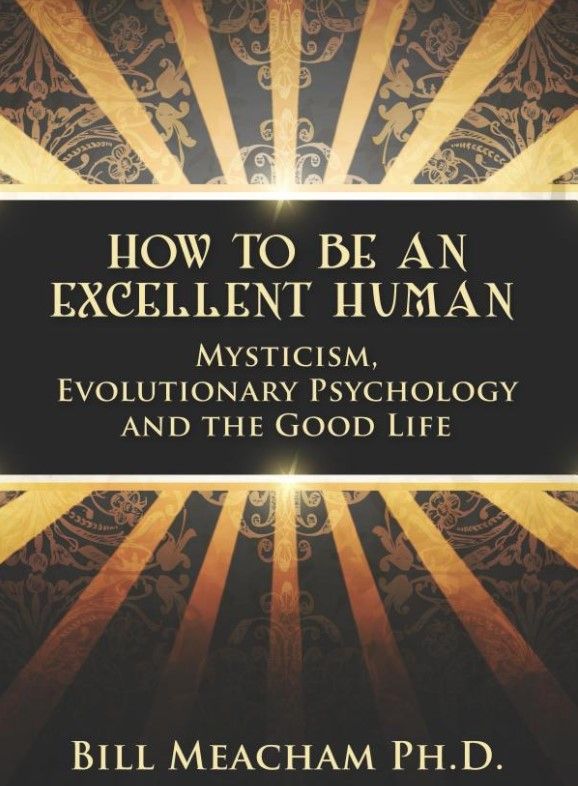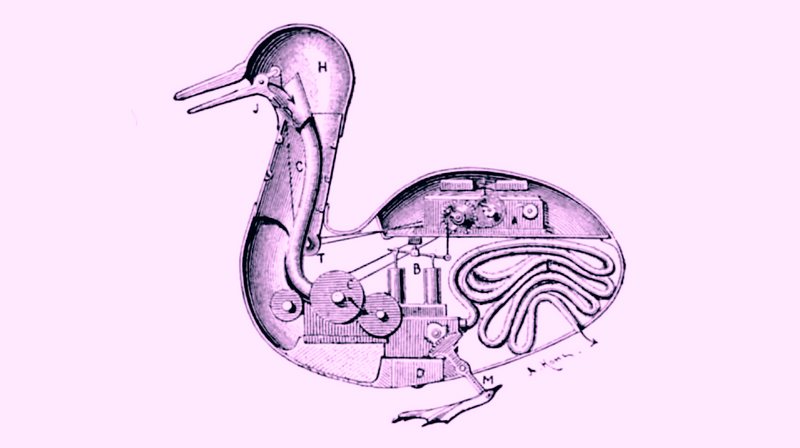Organisms Are Not Machines
As I have discussed elsewhere the model of organism, of a living being, is a much more robust way of thinking about the whole of reality than the model of machine, of a device constructed from non-living parts. This is especially true when it comes to actual organisms. Steve Talbott, a researcher at the Nature Institute, has written an excellent screed condemning the tendency among biologists to think of organisms on the machine model.(1) Evidently, to do so is a common failing among biologists; and Talbott thinks that that way of thinking is just wrong, not in a moral sense, but in the sense of being incorrect, not the truth. To think of organisms as machines or as collections of machine-like parts rather than as integral wholes whose living form governs the parts fails to do justice to the plain facts, easily observable in nature.
Take the human heart. It is common to conceive of it as a pump, sending liquid through the numerous pipes – arteries, veins and capillaries – found in the body. But a mechanical pump could not possibly propel the quantity of liquid over the vast distances and through the tiny vessels that the human heart does. There are more than six thousand miles of blood vessels in the human body, most of them microscopically small, some so narrow that red blood cells must be deformed to squeeze through. And the system leaks; every day about eighty times the total volume of our blood plasma seeps out of the capillary system and into the surrounding tissues and then, via a circuitous route, back into the cardiovascular system. Talbott asks us to consider whether it is plausible that a mechanical pump could do the same:
Make a simple test for yourself. Try blowing, not even viscous blood, but just water, through a 100-foot-long rubber tube. Make it easy by choosing a tube with a one-millimeter, rather than a microscopically small, diameter. Or, for a yet easier test, simply try blowing a few lungfuls of air through the tube. You will realize soon enough that if your heart could suddenly exert enough mechanical force to move blood on a complete circuit involving those several thousand miles of invisibly small and leaky channels, your body would explode.
So it can’t be the heart alone that moves blood through the body. In addition, the arteries expand and contract in a wave-like fashion to move the liquid along, and other parts of the body do something similar to handle the blood plasma that is outside the capillary system. It’s true that the heart’s left ventricle gives impetus to the blood leaving the heart for the high-pressure arterial portion of the cardiovascular system, but that is only about 15% of the whole. The rest, including the capillaries, veins, right side of the heart, circulation through the lungs, and left atrium of the heart is governed by something else; but what? Talbott’s answer: the body as a whole organism.
A crucial fact is that … the heart’s output volume is … proportional to the oxygen consumed in all the body’s tissues. This suggests that the body’s metabolism is a primary driver of the blood. While muscular exertion, lung movement, and suction from the right side of the heart definitely play roles, the tissues themselves must continually replenish the volume of blood. In doing so they perform a major service in driving the blood back to the heart. The heart then acts as a subtle regulator of this flow — even restraining or damming it up to a degree. It thereby lends rhythm … while at the same time warming the blood and, in general, sensing and responding to overall conditions in a harmonizing way. Only in sick hearts does this “musical” performance tend to degenerate into a mechanically regular, metronome-like heartbeat.
The heart is not a mechanical pump. It is, rather, an element in a whole system that plays numerous roles. It pumps liquid to be sure, but it also regulates the flow of liquid pumped by other parts of the system and produces heat as well. Crucially, it senses overall conditions and responds in a way that produces harmony. You can understand how a a mechanical pump works apart from any particular installation, but you can’t understand the human heart without taking into account the whole organism of which it is an element. Says Talbott, “the one thing abundantly clear is that the picture of the heart as a pumping machine is hopelessly inadequate.”
Talbott makes a number of similarly trenchant observations:
- Designs that are imposed from without, such as, for instance, the design of a stereo sound system, are quite different from those that grow organically from within a developing organism.
- Organisms are so complex that what is a cause on some occasions can be an effect on others.
- The molecules of life, being affected by quantum interactions that are inherently non-deterministic, are not well described as if they were static things like those found in our everyday experience and of which machines are made.
- Nor are organisms computing machines. DNA is not digital; its four chemical bases are discrete entities like the binary bits of computer code only when they are dead, removed from their animated context. Embedded in a living cell they change their function depending on the chemical characteristics of their surroundings, how tightly the double helix is twisted, its distance from the cell nucleus and many other conditions.
I cannot do justice to Talbott’s article in this short summary. I urge you to read it yourself. The upshot is that organisms are not machines and it is a mistake to think of them as if they were. But if they are not machine-like, what are they? How do they function?
Talbott’s account of organisms contains themes remarkably similar to the process metaphysics of Alfred North Whitehead, which asserts that (a) process is better taken than substance as the most fundamental concept pertaining to all of reality and (b) everything has an aspect of mind as well as matter.(2)
Organisms as they develop, grow and mature are processes first, says Talbott, and only later discrete physical forms: “Structures result first of all from movement and flows.” Quoting Wolfgang Schad, Talbott says “The body does not behave like a plumber, first connecting the water pipes in a house and then turning the water on. … The first blood-like liquid … simply trickles through gaps in the tissues. … Preferred channels develop only very gradually as blood cells are deposited along the edges and eventually merge into the beginnings of vessel walls.” Thus, “in the organism stable form precipitates out of movement, and so long as a structure remains living, it is never absolutely fixed.”
This is the fundamental premise of process metaphysics. In that view, not just living organisms but all things are composed of processes, out of which stable form precipitates. What we see as fixed form, as substance, is a persisting pattern amid change, much like the flame of a candle.
Organisms have mind, awareness of their surroundings, and intention, says Talbott. Life has “intrinsic inwardness.” All material phenomena have an “inner nature.” The “idea of the arrangement [of the parts is] actively at work in the parts themselves.”
We can certainly understand how an organism can have a mind, because we ourselves are organisms and we are each directly acquainted with our own mind. But what does it mean to say that the idea of the arrangement of the whole is at work in each of the parts? For this to be true, each of the parts must have the ability to entertain an idea, i.e., mind. And that is just what process metaphysics asserts. Whitehead, a panpsychist, says that each elementary unit of reality is an “occasion of experience”(3), a momentary coming into being, becoming complete and passing away, that takes its surroundings into account in a manner analogous to how we humans experience our surroundings, albeit in a much more primitive fashion. The primordial experiences of the actual occasions comprising living organisms bind together and reinforce each other, giving birth to a higher-level experience. Talbott asserts that the binding together goes both ways, not just from part to whole, but from whole to part as well. The higher-level mental unity of the whole informs the mentality of each of the parts and gives direction to their growth and development.
The part cannot be fully understood in isolation from the whole. What is primary is the whole: “It is the whole that governs the parts,” says Talbott. An organism’s parts “interpenetrate each other” and “bear within themselves the imprint of the whole.”
If this is true of organisms, and the whole of reality is to be understood on the model of organism, then we ourselves are not only organisms in our own right but elements in a larger organic whole. We interpenetrate each other psychically; none of us is an island; what happens to one of us affects us all. Hence, it behooves us to try to alleviate suffering and promote health and well-being for everyone. Each of us bears within him- or herself the imprint of the whole of which he or she is a part. Hence, it behooves us to learn about the nature of that whole so that we can more consciously embody and enact it. We need, in other words, what the wisdom traditions of the world have long taught: compassion and insight.
—
Notes
(1) Talbott, “Biology’s Shameful Refusal to Disown the Machine-Organism.” All quoted passages without footnotes are from this paper.
(2) See my “Tao Te Ching Ontology” for a fuller discussion of Whitehead’s philosophy.
(3) Whitehead, Adventures of Ideas, p. 221.
References
Genetics Home Reference. “What is DNA?” Online publication http://ghr.nlm.nih.gov/handbook/basics/dna as of 4 May 2014.
Meacham, Bill. “Tao Te Ching Ontology.” Online publication http://www.bmeacham.com/whatswhat/TaoTeChingOntology.html and https://www.academia.edu/4341543/Tao_Te_Ching_Ontology.
Talbott, Stephen L. “Biology’s Shameful Refusal to Disown the Machine-Organism.” Online publication http://natureinstitute.org/txt/st/org/comm/ar/2014/machines_18.htm as of 1 May 2014. Archived at http://www.bmeacham.com/whatswhat/OP/Talbott_ShamefulRefusal.html.
Whitehead, Alfred North. Adventures of Ideas. New York: The Free Press, 1967.
Wikipedia. “Atrium (heart).” Online publication http://en.wikipedia.org/wiki/Atrium_(heart) as of 4 May 2014.
Wikipedia. “Double circulatory system.” Online publication http://en.wikipedia.org/wiki/Double_circulatory_system as of 4 May 2014.

How To Be An Excellent Human
Mysticism, Evolutionary Psychology and the Good Life by Bill Beacham, Ph.D.

